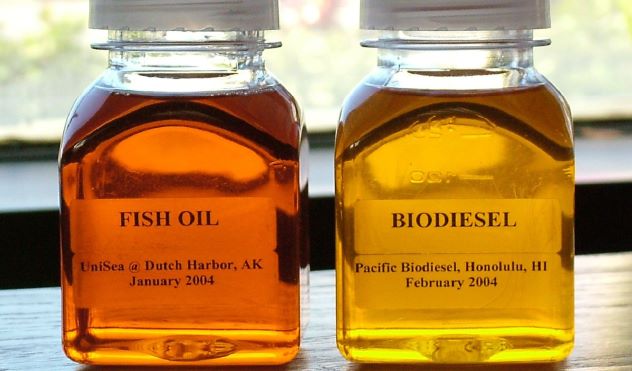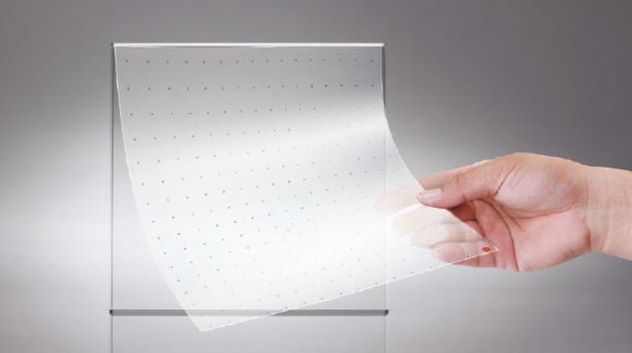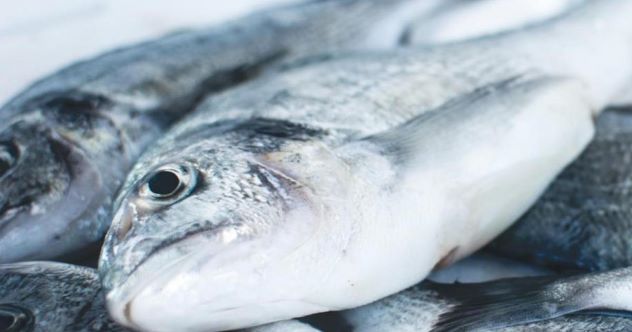Fish have been a part of the human diet for centuries. We have learned more about the risks and benefits of eating fish over time. We have also become quite fond of the taste and texture of fish. (Well…not our vegetarian and vegan friends.) Eating fish offers nutrients that aid in reducing the risk of death from heart disease. It also lowers the risk for other health conditions such as stroke. We even understand the role these nutrients play in the brain development of infants.
But…too much of a good thing is bad. Moderation is key.
Fish contains mercury and other contaminants. (Think about the polluted oceans.) Overconsumption of fish increases your level of mercury within the body. This is dangerous for pregnant and nursing women and their babies. The U.S. Department of Agriculture has created guidelines and interactive online tools to inform the public on safe fish consumption.
Yet, depending on your culture, traditions, and where you are in the world can determine the part of the fish you eat. In the U.S., many eat fish fillets and consider the remaining parts of the fish “undesirable.” Even though not everyone eats fish every day of the week, we all have some sort of encounter with a fish product every day. With the demand for fish increasing all over the world, fishermen and scientists are determined to find ways to repurpose fish waste or fish by-products.
Let’s dive in…
Related: 10 Products Which Were Invented In Unusual Ways
10 Biodiesel

Fossil fuels are a limited source. They are nonrenewable. Once they are gone, we cannot create more. It is not ideal to wait millions of years in the hope that more will form. But there is no need for a lengthy science lesson. In short, scientists have already begun searching for other sources of sustainable energy. From wind-powered turbines to solar panels to electric-powered cars, the search continues.
Someone had a bright idea to create an alternative fuel source. A less costly but energy-efficient source using fish by-products. Fish processing units produce billions of tons of fish waste every year. The waste or discarded fish parts such as bones, skin, and even fish heads are usually dumped back into the ocean—adding to our already polluted oceans. Eco-friendly biodiesel is created when the fish by-products or waste are pressed, and the fish oil is then extracted. The fish oil is the base for the biofuel, but other compounds are added before it is ready to be used by your car’s engine or even a plane.[1]
9 Cosmetics
Ever thought about using fish skin on your face? We all want to look our best, don’t we? It makes us feel even better when we can use a beneficial product that makes a positive impact on our environment, right? In the beauty and cosmetic industry, collagen is well-known for its wrinkle-reducing properties and ability to improve skin health.
Marine collagen, or collagen derived from fish skin, has the same benefits as mammalian collagen (LINK 6). It can be used as a moisturizer for the skin to fight against aging. Maybe it will be your new favorite product to add to your daily routine. Other cosmetic products derived from fish by-products are nail polish remover, hair styling gel, and some makeup applications—the fish by-product is the base.[2]
8 Gelatin
Can you imagine having strawberry and fish gelatin cups as a dessert? Or cranberry, vodka, and fish gelatin shots to unwind after a long week? Desserts are a sweet spot for me. And I can say that I have never considered having fish for dessert. Gelatin is usually made from cow and pig by-products, but it is also made from…you guessed it…fish. Though it may not be able to completely replace mammal-based gelatin, it does provide another option for those with religious concerns.
However, there are some different chemical properties of mammalian gelatin and fish gelatin. For example, gelatin from fish has a lower gelling point—the temperature at which the substance begins to solidify and form into a gel. Scientists performed a study and found that fish gelatin would be great for frozen desserts like ice cream. Just like mammalian-based gelatin, fish gelatin can also be used as a food additive.[3]
7 Animal Food

Fish by-products are found in animal feed and pet food. This one may not be much of a surprise. But it is one that those without pets or those who are not familiar with livestock may overlook. Animals and humans both benefit from adding fish to their diet. The protein-rich fish by-products help with the growth and development of our beloved pets and livestock.
Also, the rise of animal lovers wanting to give their furry friends high-protein-rich food and treats has opened the market for new sources of meat. Fish skin is notably high in protein while low in ash, so it is an obvious choice to use in the manufacture of animal feed and pet food. With over $42 billion spent by U.S. consumers on pet food in 2020, with Millennials more focused on organic products, the need for safe and sustainable sources is obvious. And this is where fish by-products can really help. [4]
6 Food Packaging
The most frustrating thing about enjoying a snack during a hangry moment is trying to open the package. All frustrations aside. Great packaging for a product usually means that the product’s freshness and taste are preserved. It also improves the shelf life of the product.
To create ideal food packaging, companies usually use plastic films. But fish skin can be used to create a thin film that is biodegradable and an effective barrier. Gelatin films made from fish skins are great barriers or protectors against oxygen and oil. While it may sound unappetizing, it may help reduce our reliance on plastic-based packaging. As long as this fishy cling film is easier to get off of the roll without folding in on itself, we’re set![5]
5 Pharmaceutical and Medical
There are various ways fish by-products are used in the pharmaceutical and medical industries. Actual fish oil—in its liquid form—can be taken as a dietary supplement as can as marine collagen. Nutritional supplements have many forms, like liquid, powder, and capsules. For example, fish gelatin can be used to coat capsules for medicine or even create those gummy vitamins that are popular with children…and adults.
Even with a fish-rich diet, you still may not be getting all the fatty acids you need from your diet. Fish-coated supplements are a way that you can absorb those needed lipids to help lower your risk for cardiovascular disease, hypertension, and autoimmune and inflammatory diseases.
Some studies have also revealed that fish by-products can play a role in such medical products as artificial human skin, fine-grade absorbable sutures, and products to arrest bleeding during certain microsurgeries.[6]
4 Clothing and Accessories
Fish are always in style—from the vibrant colors to mermaid tail flare to fishnet stockings. Whether inspirationally or literally, using fish in your wardrobe is not for those lacking a fashion sense.
In the past, Nordic countries used fish skins to make shoes and pants. They were even used to create an accessory like a bag or sack. Imagine a pair of leather fish skin boots with a fin-tastic matching bag. Today cowboy boots made with fish skin leather are thought to be luxurious even in the United States. One designer is even making sunglasses from salmon skin.[7]
3 Household Items
Take a moment and look around your home or wherever you are right now. With minimal effort, you can find at least three products that use fish by-products. Ok…maybe it’s not the exact product in your home, but there are similar products in existence.
Fish waste is used to make soaps, candles, lubricants, rubber, detergents, printing ink, paint, varnishes, and glue. Fish glue is commonly used to bind wood, paper, or leather, and it is known to have a low setting time. Candles use the oils created from fish by-products. How many more functional products can be created from repurposed fish waste?[8]
2 Photography and Electronics

Film photography seems to be a thing of the past. However, new technology is relevant and prevalent. To be more eco-friendly, scientists came up with a biodegradable film for photography and some electronic devices.
Thin and transparent films are made from fish scales for flat electronics such as logo display lighting and flat-panel displays to help with flexibility and a green or environmentally friendly approach. Similar to the benefits of using fish by-products as food packaging, films treated with fish gelatin increase the storability of photos—the ones you can hold in your hands, not digital.[9]
1 Fertilizer
Have a green thumb? The common use of fish by-products is as a fertilizer. Often fish by-products are called fish offal. It is a term to describe all the discarded portions of the fish, including the eyes, head, heart, swim bladder, tail, scales, eggs, and milt. Using fish offal fertilizer is n everyday practice in organic agriculture, focusing on providing quality food from the environment while maintaining soil fertility. The fish offal is ideal fertilizer due to its nutrient-rich composition, low cost, and rapid decomposition.
There are more ways fish offal is used, but they did not make the top ten list. For example, isinglass is formed from dried fish bladder and sometimes used to clarify beer, wine, and vinegar. Another example is dried salmon skins, which are now being advertised in the mainstream as a healthy snack. There are many recipes using fish offal that offer a slight nudge toward eating nose to fin.
Scientists and fishermen are still looking for creative and beneficial ways to use the massive amount of fish waste created every year. But we can help too. How? Brainstorm. What way could I practically use fish oil? Where can we decrease the exploitation of fish? Bounce ideas off a friend. Do not shy away from sharing your thoughts. Maybe your next idea could be the one the world needs.[10]
